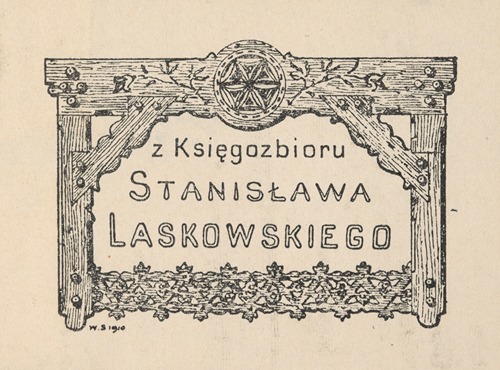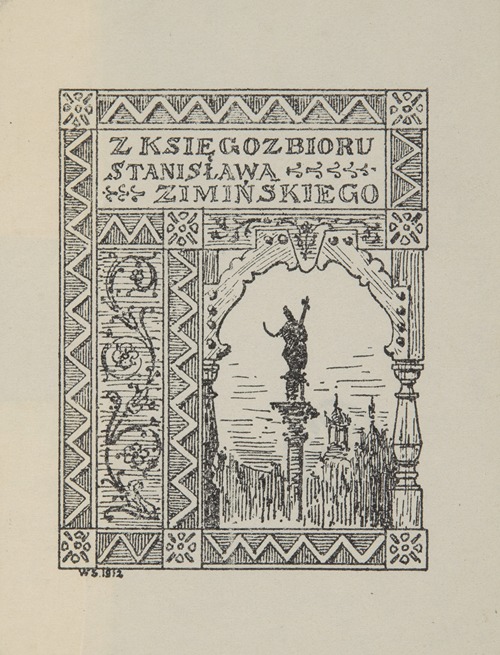

Władysław Roman Sztolcman was a Polish artist, illustrator, documentarian, conservator of historical monuments, miniaturist, and designer.
In 1886, he graduated from Wojciech Górski's gymnasium on Hortensja Street in Warsaw, and in 1890, he graduated from Jerzy Kühn's technical secondary school on Składowa Street. In 1900, he opened his first studio. His mentors in the profession included Adrian Mikołaj Głębocki, Ludomir Franciszek Dymitrowicz, and Jan Michał Strzałecki (1837/1838-1919), who later became his father-in-law. He spent the last years of his life in Suchedniów[citation needed].
Professionally, he collaborated with many collectors and art researchers (including Dominik Witke-Jeżewski, Stanisław Ursyn-Rusiecki, Michał Federowski), as well as organizations such as the Society for the Preservation of Historical Monuments in Warsaw. In 1909, he was awarded third prize for his design of a bridge balustrade and electric lamp posts for a city bridge under construction on the Vistula River in Warsaw.
He was one of the longest-serving artists documenting monuments of Polish national heritage in the studio of the Iconographic Archive, a cultural institution established on the initiative of Bronisław Gembarzewski in 1914, which was moved in 1916 from the headquarters of TOnZP in Warsaw (the Baryczków tenement house) to the National Museum of the Capital City of Warsaw (now the National Museum in Warsaw) and eventually incorporated into the structure of that institution. As part of his work at the Iconographic Archive, he mainly created watercolors (approx. 2,000), but also photographs. He was a versatile artist, who rendered the material, color, and structure of the objects he copied with reverence and precision in his watercolor drawings. He also lent his own collection (furniture, fabrics, goldsmithing) for documentation purposes.
W. Sztolcman also created miniatures on ivory and was a modeler, furniture designer, advertising poster designer, and bookplate designer. He also specialized in the conservation of engravings, paintings, miniatures on ivory, and metal plates. He made models of buildings and, perhaps more as a hobby, furniture for dollhouses.
His works (drawings, bookplates, sketches, furniture for dollhouses, collectibles, biographical materials) can be found in the collections of the National Library and museums such as the National Museum in Warsaw, the Ethnographic Museum in Warsaw, the Polish Army Museum in Warsaw, the National Museum in Krakow, and the Museum of Toys and Play in Kielce.

